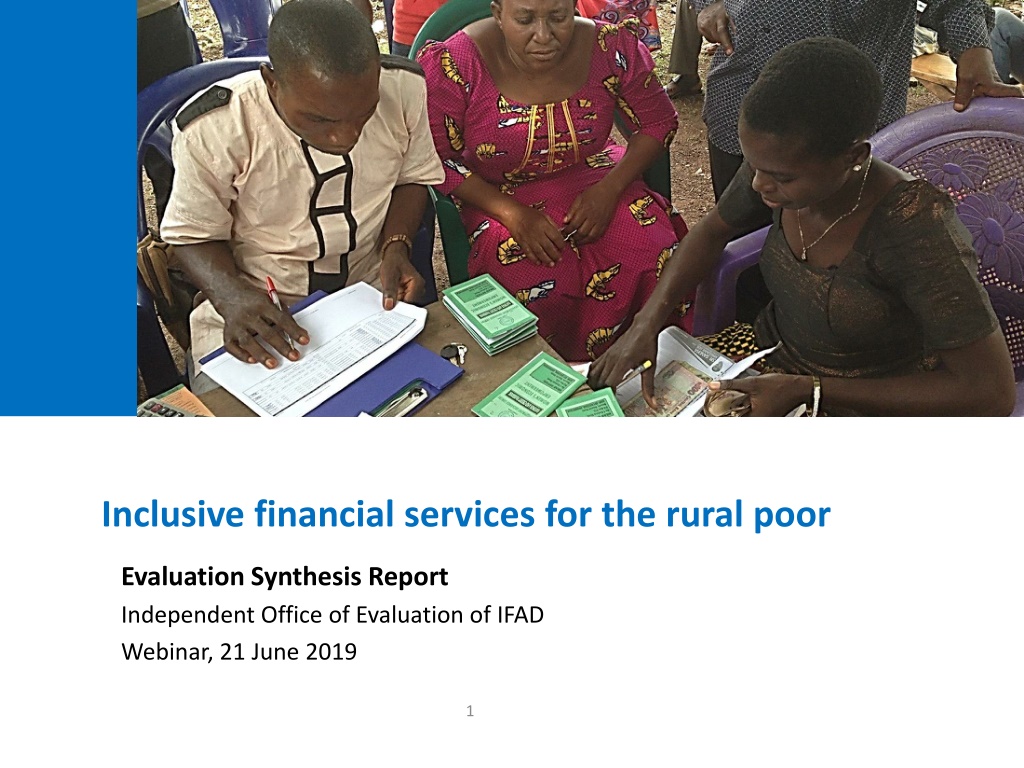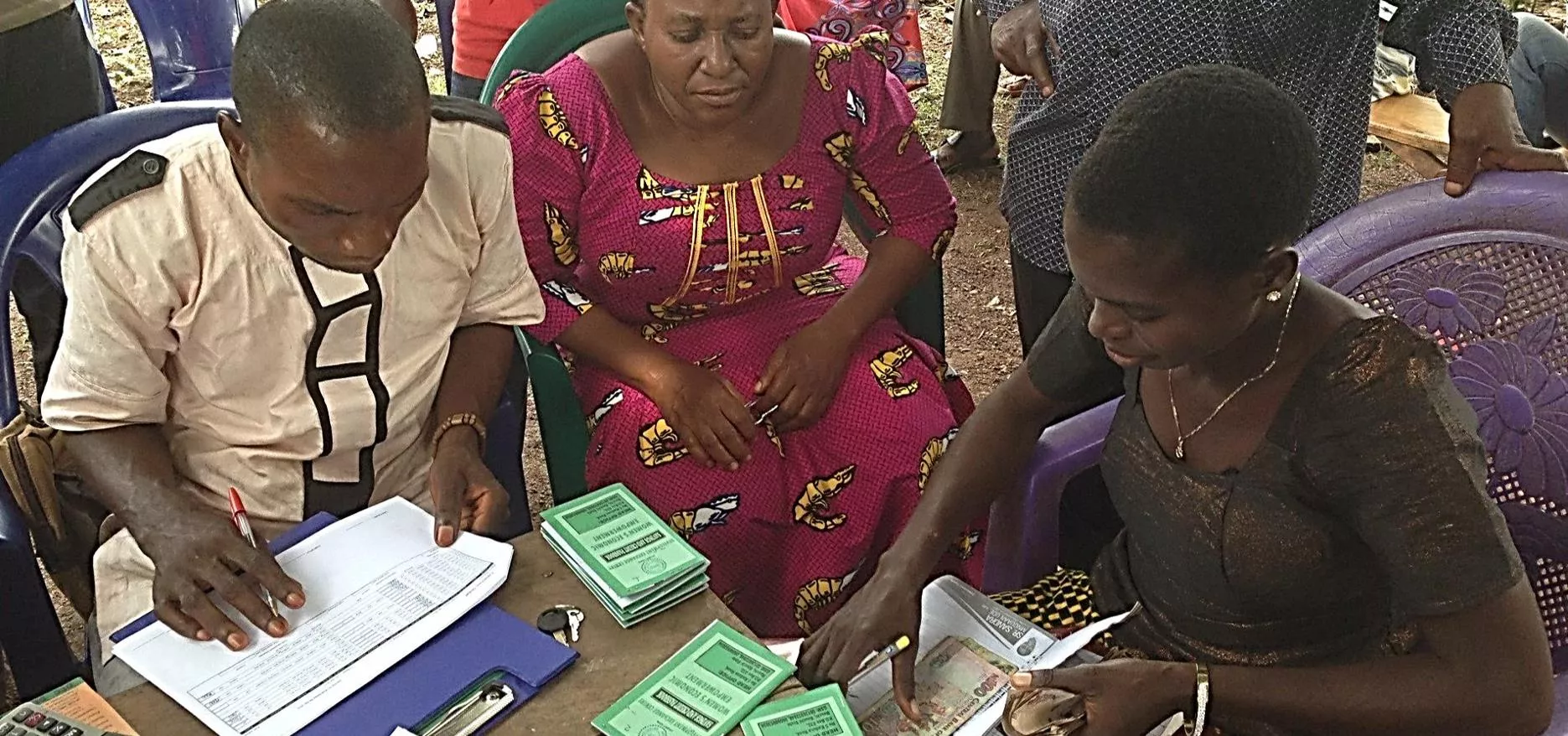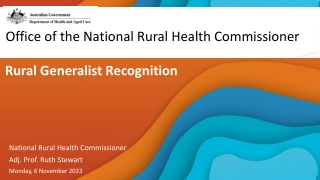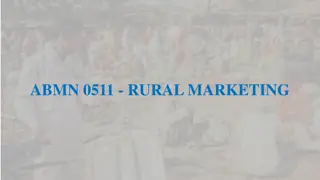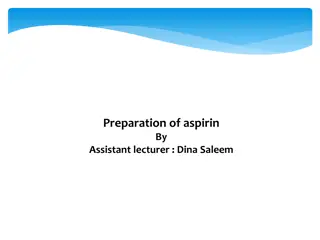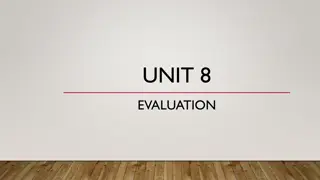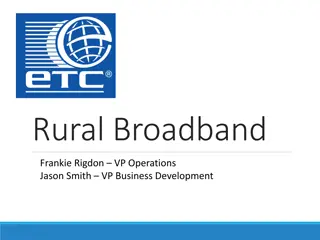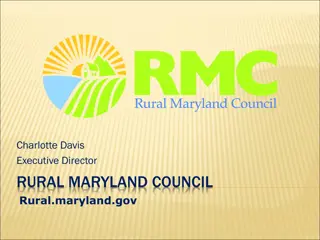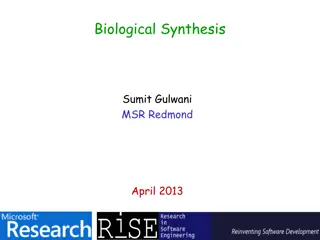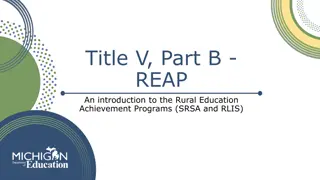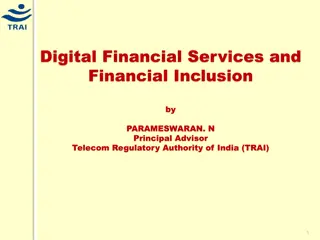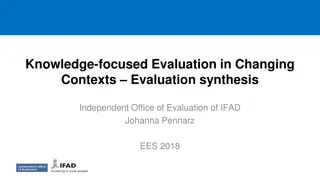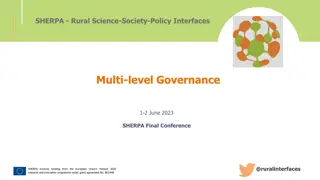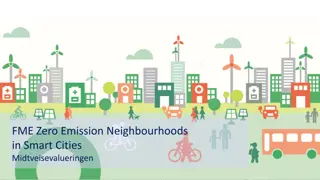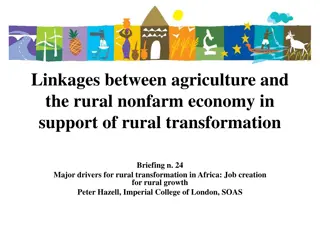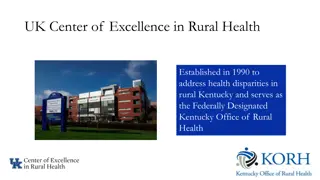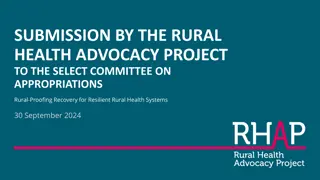Evaluation Synthesis of Inclusive Financial Services for the Rural Poor
Evaluation synthesis of IFAD's inclusive rural finance initiatives since 2008, focusing on relevance, effectiveness, and impact. Methodology includes desk reviews, country and project evaluations, policy analysis, and practitioner feedback. Highlights IFAD's $3.4 billion rural finance portfolio, the 2009 Rural Finance Policy guiding principles, and key partnerships driving knowledge and learning in the sector.
Download Presentation

Please find below an Image/Link to download the presentation.
The content on the website is provided AS IS for your information and personal use only. It may not be sold, licensed, or shared on other websites without obtaining consent from the author. Download presentation by click this link. If you encounter any issues during the download, it is possible that the publisher has removed the file from their server.
E N D
Presentation Transcript
Inclusive financial services for the rural poor Evaluation Synthesis Report Independent Office of Evaluation of IFAD Webinar, 21 June 2019 1
Objectives and scope The synthesis reviewed - Relevance of IFAD's policies, guidance and knowledge on inclusive rural finance; - The relevance, effectiveness, sustainability and impact of inclusive rural finance models. Scope: - Evaluations conducted since 2008 - Policies and guidance adopted since 2008. Interventions at macro, meso and micro levels Diverse instruments, products and services Corporate-level Evaluation in 2007 Revised Rural Finance Policy in 2009 2
Methodology Evaluation synthesis: Desk review drawing from independent evaluation findings Systematic review of IOE evaluations - Sample of 24 country programme evaluations - Sample of 25 project evaluations IFAD policy, guidance and knowledge documents Project approvals and databases Feedback from practitioners (online survey) Evaluations and studies conducted by other international finance institutions 3
Rural finance in IFADs portfolio In total: US$ 3.4 billion - 17.7% of IFAD's project investments Per year: Approx. 120 million newly approved since 1996 48.1% of all projects have RF; number of full RF projects decreasing 4
Rural Finance Policy (2009) Holistic approach at three levels of the financial system (micro, meso, macro). Six guiding principles: 1. Variety of financial services 2. Wide range of FSPs 3. Demand-driven and innovative approaches 4. Market-based approaches, avoiding distortions 5. Long-term strategies, sustainability and poverty outreach 6. Policy dialogues and enabling environment for pro-poor rural finance 5
Learning Partnerships Experienced and well-established partners and networks with strategic roles in the financial sector Generated crucial knowledge and facilitated learning Supported the introduction of innovative concepts and approaches Largely dependent on grants Contributed to eclectic range of knowledge products in IFAD CGAP CABFIN Rural Finance and Investment Learning Centre (RFILC), MIX Market, FundaK Canadian Cooperative Association African Rural and Agricultural Credit Association (AFRACA,) APRACA Participatory Microfinance Group for Africa (PAMIGA) Microinsurance Centre at Milliman, Eastern Africa Farmers Federation (EAFF) SAFIN Network 6
IFADs in-house Capacities Rural Finance Team FAME / former Policy and Technical Advisory Division (PTA) Managing global grants Engagement in international forums Role in quality enhancement Facilitating consistent implementation of RF policy 23 rural finance thematic workshops, events and training courses since 2008 But: CPMs strongly rely on independent consultants Rural finance team no longer exists at HQ-level 7
Financial instruments remain traditional Matching grants and line of credit most common Islamic Finance Remittances Insurance Graduation Digital Finance Loan Guarantee Fund Line of Credit Matching Grants 0 5 10 15 20 25 30 35 40 45 Number of projects approved since 2009 Asia & Pacific East & Southern Africa Latin America Near East & North Africa Western & Central Africa Source: PMD FAME database 8
Review of project evaluation sample Sample: 25 project with IFS funding 13 projects responded to overall opportunities and challenges within national policy frameworks, not necessarily financial sector policies National financial inclusion strategies only partly reflected Changing framework condition challenging: e.g. economic recession, inflation or financial crises Lack of a realistic assessment of beneficiaries capacity and demand for financial services at design Demand for innovative products and services generally insufficiently assessed 9
Achievement of results Better results achieved by full rural finance projects 12 10 8 Mixed project (20-60% IFS funding) Project with dedicated IFS component Full IFS project (>60% IFS funding) 6 No. of projects 4 2 0 0 - +/- + ++ Level of documented results Source: ESR sample analysis 10
Effectiveness of financial instruments Proportion of projects with types of financial instruments Apex (n=9) Loan Guarantee (n=4) Credit Line (n=15) Matching Grant (n=2) Value Chain Financing (n=4) 0% 10% 20% 30% 40% 50% 60% 70% 80% 90% 100% Projects with strong IFS results (n=5) Projects with negative or no IFS results (n=8) Remaining projects (n=10) Source: ESR sample analysis 11
Effectiveness of financial service providers Proportion of projects with types of FSPs Credit Unions (n=7) CBFOs (n=12) Commercial Banks (n=8) State Banks (n=7) MFI/NGOs (n=8) 0% 10% 20% 30% 40% 50% 60% 70% 80% 90% 100% Projects with strong IFS results (n=5) Remaining projects (n=10) Projects with negative or no IFS results (n=8) Source: ESR sample analysis 12
Main influencing factors Negative: limited analysis of the institutional and political context (9 projects) Favourable policy environment: Armenia, China, Uruguay and India (4 projects) Appropriate IFS strategy: funding modality and choice of partner. (11 projects) Inappropriate IFS strategy: insufficient funding, choice of financial products (7 projects) Common capacity issues: - Weak government capacity to manage IFS projects; - Lack of meso-level institutions; - Limited institutional and staff capacity of FSPs 13
Gender results Projects with strong gender results (n=7) Projects with no or negative gender results (n=12) 100% 80% 60% 40% 20% 0% -20% -40% -60% Commercial Banks CBFOs Credit Unions Apex MFI/NGOs State Banks Source: ESR sample analysis 14
Outreach to Micro/Small/Medium Enterprises Finding the right instrument to fund MSMEs has been challenging; funds often less effective Finance and business development services often not effectively linked Matching grants common, but not properly applied as one-off support within longer term financing strategy Value-chain financing still at initial stage; not systematically applied 15
Sustainability Important principle of RF Policy 2009 Strategies for sustainability: - Support apex organisations - Lower MFI operational and transaction costs - Diversify MFI services and products Institutional sustainability requires time Tension with pro-poor client focus Simple approaches may work better in some situations 16
Effectiveness of multilevel approaches Holistic financial sector development stipulated by RF Policy 2009 Projects working with existing meso-level organisations had better impact Efforts to establish new Apex organisations were less successful Intervention levels 14 13 12 No of projects reviewed 10 8 6 5 5 4 2 0 Macro, meso, micro Meso, micro Micro Source: ESR sample analysis 17
Intervention levels and impacts achieved Interventions at all levels achieve better impact on sector and policy Intervention levels and impacts achieved 90% 80% Proportion of projects reviewed 70% 60% 50% Macro-Meso-Micro (n=5) Meso-Micro (n=13) 40% Micro (n=5) 30% 20% 10% 0% Impact on target group Impact on institutions Impact on sector Impact on policy Source: ESR sample analysis 18
The way forward for IFAD What IFAD should do more What IFAD should do less Promote savings and insurance Value chain financing Performance-based agreements with FSPs and meso-level organisations Leverage financial aggregators Support MFIs and Cooperatives Linking loans and non-agricultural activities Mobile banking Strengthen institutional governance Partnerships with global and regional networks Technical assistance for direct beneficiaries Including financial and non- financial support in the same component Support state-owned banks Support CBFOs without linking them to the financial sector Matching grants Blended finance Credit funds for specific groups Establishing standalone MFIs or FSPs Getting government to run funds Source: ESR online survey 19
Lessons (1) Holistic approach can work in standalone IFS projects Simple approaches work better for IFAD Institutional sustainability requires diverse products and services, charging cost-covering rates Well-established apex organisations can provide effective services and funding to FSPs Credit lines effective in markets where liquidity is a key constraint Loan guarantee funds require high level of technical knowhow, funding and long-term perspective 20
Lessons (2) Value-chain finance requires differentiated approaches to serve all segments MFIs/NGOs/CBFOs more poverty oriented Graduation targets the very poor Innovative aggregators (postal networks, mobile operators) support outreach to remote rural areas Sustainability of FSPs in rural areas requires longer- term support and permanent apex structures Engagement in financial sector policy dialogue requires broader partnerships 21
Conclusions Aspirations in IFS policy, strategy and guidance have been rising They have to be matched with adequate technical capacities within IFAD IFAD's business model steers demand for instruments, services and products Innovative and more diverse financial services are not commonly used FSP capacities major constraint; needs to be addressed at the meso level 22
Recommendations 1. Conduct stocktake of current IFS practices on the ground (e.g. on matching grants) 2. Update IFAD's Rural Finance Policy and prepare a corporate IFS strategy 3. Enhance strategic impacts at institutional, sector and policy levels through greater focus on meso-level institutions and stronger partnerships with agencies working in the sector 4. Conduct sound analysis at the design stage and be flexible to adapt during implementation 5. Continue experimenting with innovative approaches and services locally 23
Thank you Johanna Pennarz (j.pennarz@ifad.org) Martina Wiedmeyer-Pfister (wiedmaier-pfister@t-online.de) With support from: Nick Bourguignon; Antonio Cesare; Valentina Di Marco Conte Full report available on https://www.ifad.org/en/web/ioe/event/asset/41183762 24
